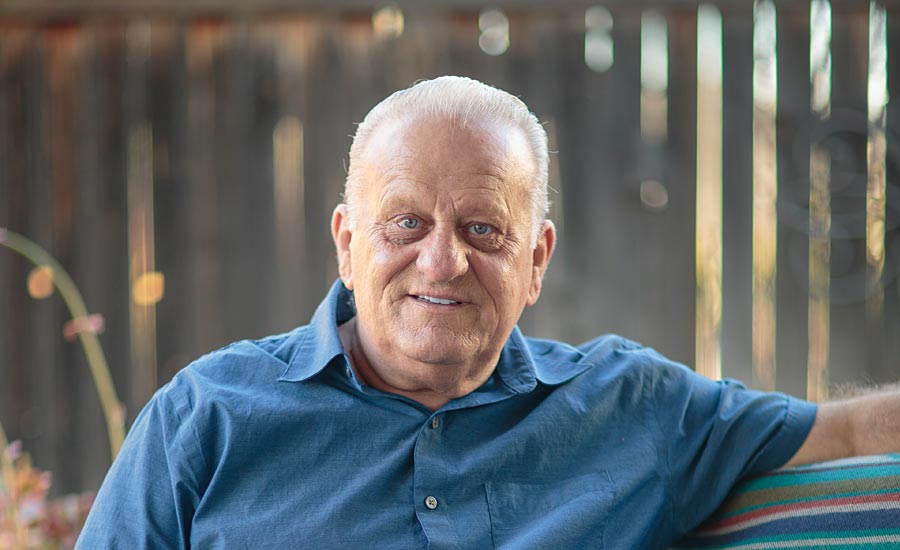If you’ve ever suffered through a difficult lesson, you were likely not in Gary Griffith’s class. Griffith teaches geometric dimensioning and tolerancing (GD&T), quality audits, measuring and gaging, and other quality-related subjects, and though the technical aspects could make for a dry learning experience, his students say Griffith makes it fun. And if you need help after class, he’s available. And in some cases, this means a long time after class. Diane Pereira took his class almost twenty years ago and now is a trainer herself but still relies on Griffith if she’s stumped by a question. “I want to call him the da Vinci of blueprint reading,” says Pereira. “He’s a genius. That’s the word that comes to mind. He’s my mentor in the GD&T world.”
And his students aren’t the only ones who’ve noticed his skills. Last year ASQ honored Griffith with the Hromi Medal, which recognizes individuals who have made significant contributions to the advancement of the inspection profession. Jim Spichiger, who nominated Griffith for the award, wrote, “In my opinion, Mr. Griffith’s book “The Quality Technician’s Handbook” is the most influential book on this subject matter.”
In addition to this book, Griffith has written ten more books and trained thousands of people on quality themes. For these reasons and more, Griffith is our 2019 Quality Professional of the Year.

It All Started with Hula Hoops
He’d always been interested in manufacturing—mechanics and physics were his two favorite subjects—and his lifetime of manufacturing experience began in high school. He worked the second shift at a plastics plant, making hula hoops.
After graduation, he continued his manufacturing career at Eaton Corp. where he learned about machining and inspection. The inspection job was where he was first exposed to quality, and the early days of quality were difficult.
“Back then, there wasn’t much quality,” Griffith says. “Back then you were lucky if you made good parts. The experience was basically two-fold. I realized first of all, as an inspector, you’re finding bad parts all over the place. I was also impressed when using precision measurements, like gage blocks and things. I was amazed at how accurate these things are. That just kicked off everything.”
“That was back in the day, make product, get it out the door, that was the modus operandi of the companies I worked with, and suppliers too. That’s where I got an appreciation, or vendetta, to help improve quality.”
When the Ohio plant shut down, he went to California for a week to scout out the job market there. He found plenty of opportunities—13 job offers—and so his family moved to California.
Aerospace and Moonlighting
Griffith later worked at Allied-Signal Automotive and Allied-Signal Aerospace, and held positions as a quality engineer and quality manager. “For me it was all about I’ve got to make a living, but I also want to make a difference in quality,” Griffith says.
During his long career, he’s found some positive trends in quality, from quality circles to SPC to better attitudes about quality, but also says there is still work to be done.
“If the producers are not responsible for quality, quality will not get better,” Griffith says. “Companies have to realize they need to transfer the responsibility of design quality to engineering, and manufacturing quality to manufacturing. The responsibility to judge quality is still the responsibility of the quality department, and to support manufacturing.”
He’s still on a mission to improve quality, this time as a consultant. It all started thirty years ago when the local community college asked him to teach a course. “I found, rather quickly, that I loved teaching,” he says. Then he began moonlighting and doing training on his own for local companies and teaching seminars on vacation. After about ten years, he decided that teaching and consulting was what he wanted to do.
Today he runs Griffith Training and says getting to see results from his classes has been a career highlight. “The best thing I’ve seen is the improvement because of that training,” he says. “When I taught at college, I’d work very hard to teach, then they leave and I’d never see them again. These days, the last several years, I not only train the people, I see them do it right. It’s a closed loop. That’s the best thing. They actually learned it and did it right.”
He’s proud that his mechanical design courses and GD&T lessons help engineers design and dimension items properly. “I know once I teach them, it will be at least one source of quality that won’t cause scrap,” Griffith says.
It All Started with One Quality Tip
Back in 1976, he was part of a corrective action to train machine operators on how to measure flatness. He decided to write a short article including a photo of the inspection setup after the training just to help the operators remember what they had learned. He called it a quality tip. “It wasn’t long before I had another 40 to 50 people asking me for it. Then calling me, ‘When are you going to write another one?’ About a year later, I had written 27 of them and sent them to about 800 people.” He realized that it might need a table of contents. The project became a book, and it’s been in print ever since.
This book eventually lead to many more—“I found that I also loved writing,” he says—and eventually an ASQ medal. Jim Spichiger had never met Griffith before he nominated him for the ASQ Hromi Medal. But he had known of his book for more than twenty years and thought the author deserved to be recognized.
Spichiger uses the book to teach a course preparing students for ASQ’s certified quality inspector and certified quality technician exams, and says the book is a good fit for the open-book ASQ inspector technician exam.
Griffith won the ASQ award and the two met for the first time at the ASQ awards ceremony in Seattle last year. (According to Spichiger, in addition to his writing skills, Griffith is also a great pool player.)
The Teacher We All Want
Griffith also uses his books in his own classes. Judging by student feedback, these classes seem to go well. Just three weeks after a training session with him, engineers have been clamoring for the next one, says Brian Flowers, who met Griffith when he was looking for training for his engineering staff. The staff took an intermediate GD&T course and then advanced training courses and SPC training. This training was very specific to the company, which Flowers appreciated. Griffith tailored the course around their specific engineering drawings, and was able to point out GD&T issues that weren’t properly applied in the drawings. His teaching skills have earned him a lot of repeat business. When other employees have gone on to new companies, Flowers notes that they’ve hired him to do training there as well.
“I think everybody that has gone through his class got a lot out of it,” Flowers says. “There are other teachers out there, but not like him.”
In addition, his former students say that this GD&T guru is approachable and has a good sense of humor during class. “He’s amazing, he’s funny. He can put a technical topic or field, very intimidating for people, especially new people, and he can make it light enough and lighthearted enough to dissipate that fear that comes with inspection and GD&T,” says Pereira. “I keep thinking, who’s going to be the next Gary Griffith? Gary is the go-to guru for GDT. I just hope he never retires.”
At this point, she doesn’t need to worry. Even after a 50-year manufacturing career, Griffith is still enjoying his work and doesn’t plan to retire anytime soon. As he says, “Why would you quit a fun job?” Q
GARY K. GRIFFITH
Author, Instructor, Trainer, Consultant; Griffith Training, Corona, CA
A FEW OF HIS BOOKS:
- “The Quality Technician’s Handbook” 6th Ed.
- “SPC Methods for Long & Short Runs” 2nd Ed.
- “Measuring & Gaging Geometric Tolerances”
- “Advanced Geometric Tolerancing for Engineers”
- “Geometric Dimensioning & Tolerancing—Applications and Inspection”
- “The Industrial Trainer”
CERTIFICATIONS AND MEMBERSHIPS:
- ASQ Hromi Medal
- Certified Instructor (State Of California; Lifetime Credential)
- Fellow (Institute of Advancement of Engineers; I.A.E.)
- Past Education Chairman (Los Angeles Section, ASQ)
TRAINING SERVICES PROVIDED:
- Dimensioning & Tolerancing Courses: Mechanical Drafting, Tolerance Stackup Analysis, Concurrent Engineering, Advanced Geometric Tolerancing, Design for Manufacturability/Assemble-ability (DFM), Failure Modes and Effects Analysis (FMEA), Functional Gage Designs For Geometric Tolerances, Geometric Dimensioning & Tolerancing, Graphical Inspection Analysis (Paper Gaging)
- Quality Courses: Corrective Action & Problem Solving, Certified Mechanical Inspector Refresher Course, Certified Quality Auditor Refresher Course, Certified Quality Technician Exam Preparatory Course, Quality Auditor Training Course, Team Problem Solving
- Inspection Courses: Inspection Planning, Inspection and Gaging, Measuring & Gaging Geometric Tolerances
- SPC Courses: Planning for Statistical Process Control, Statistical Process Control for Short Production Runs, Gage Repeatability & Reproducibility (R&R) Studies
- Shop Training: Basic Blueprint Reading, Shop Mathematics Course
ASQ HROMI MEDAL
The Hromi Medal recognizes individuals who have made significant and noteworthy contributions to the science of inspection and/or the advancement of the inspection profession. Gary Griffith’s citation read: “For significant and long term contributions as an author in the field of inspection; specifically for authoring “The Quality Technician’s Handbook,” “Geometric Tolerancing Applications & Inspection” and “Mechanical Inspection & Gaging Methods.” Also for devoted and enduring contributions as an educator to countless inspectors and technicians for over 35 years.”




